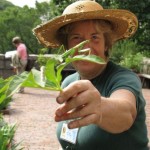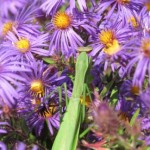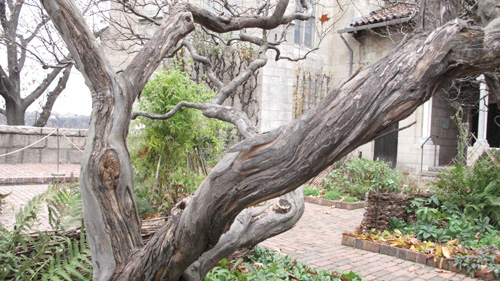

Above, left: Volunteer gardener Nuala Outes befriending a mantis in Bonnefont Garden last summer; right: one of three adult mantises seen recently on the asters now blooming in Cuxa garden.
The European praying mantis is so named because of the manner in which it raises and extends its grasping forelegs before seizing its prey, suggesting an attitude of prayer. This omnivorous species was not among the beneficial insects released in the gardens this summer as part of our biological pest control program, although several mantises already inhabited Trie and Bonnefont gardens. However, the mantis population does seem to be on the rise, and no less than three of the insect predators were recently spied in Cuxa garden on a windy day, clinging to a single planting of ‘Hella Lacy,’ a cultivated form of the native New York aster now blooming along the roadsides.
The sexual cannibalism for which the mantis is notorious seems to be more common in captivity; it is less frequently and readily observed by entomologists in the field and is the subject of scholarly debate. Autumn is the mating season for praying mantises in our climate, although we haven???t observed any unions. The compound eyes and binocular vision over a wide field—characteristic of mantises—make them at least as aware of us as we are of them, and they clearly register their consciousness of our presence when we encounter them in the gardens.
—Deirdre Larkin



